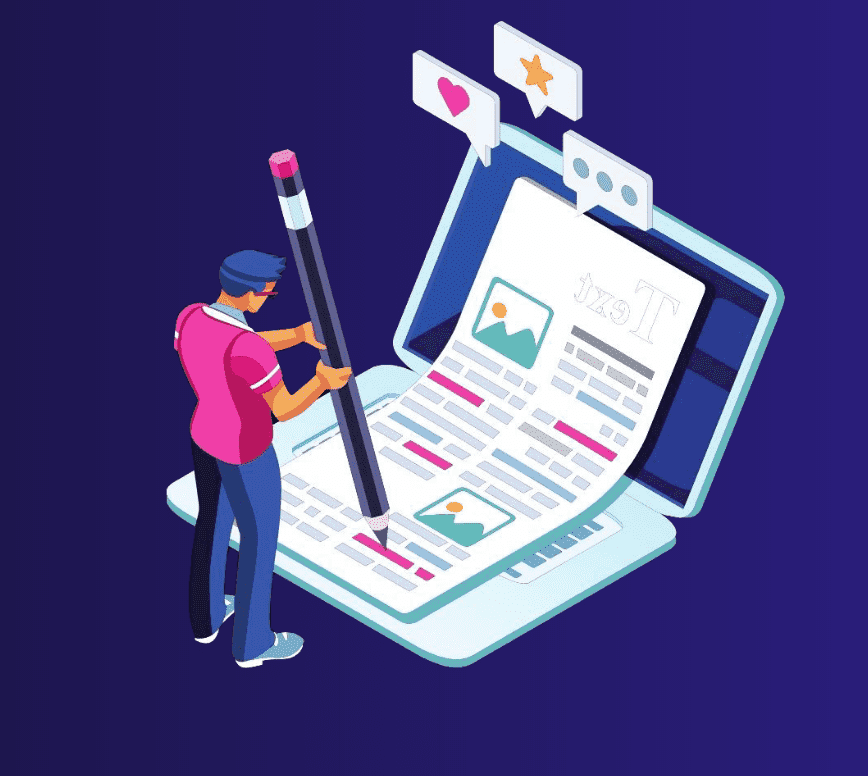A Comprehensive Guide to Understanding Your Audience Using Empathy Map
- Branding
A Comprehensive Guide to Understanding Your Audience Using Empathy Map
Empathy is the cornerstone of human-centred design, and an Empathy Map is one of the most powerful tools to help you step into your audience’s shoes. Whether you’re designing a product, crafting a marketing strategy, or improving customer experience, an Empathy Map can provide invaluable insights into what your users truly need, feel, and experience. This guide will walk you through what an Empathy Map is, why it’s important, and how to create one, both traditionally and with the help of AI.
What is an Empathy Map?
An Empathy Map is a visual tool used to gain a deeper understanding of your target audience or user. It helps teams articulate what they know about a specific type of user, fostering empathy and aligning everyone around a shared understanding of the user’s needs, behaviours, and emotions.
The map is typically divided into four quadrants: Says, Thinks, Does, and Feels. These quadrants capture the user’s verbal expressions, internal thoughts, actions, and emotional states, respectively. By filling out these sections, teams can identify pain points, motivations, and opportunities to better serve their audience.
Why Use an Empathy Map?
- Deepens User Understanding: It helps you move beyond demographics and surface-level data to understand the emotional and psychological drivers behind user behaviour.
- Improves Decision-Making: By aligning teams around a shared understanding of the user, it ensures that decisions are user-centric.
- Identifies Pain Points and Opportunities: It highlights gaps in your current offerings and reveals opportunities for innovation.
- Enhances Communication: It provides a clear, visual representation of user insights, making it easier to communicate findings across teams.
- Encourages Empathy: It fosters a culture of empathy, ensuring that the user remains at the centre of every decision.
How to Create an Empathy Map
Creating an Empathy Map can be done in two ways: the traditional, manual way or by leveraging AI tools for faster and more efficient results. Below, we’ll explore both methods.
- Gather Your Team: Assemble a diverse group of stakeholders who interact with or understand the user.
- Define Your User Persona: Identify the specific user or customer segment you want to map.
- Draw the Map: Create a large, four-quadrant grid on a whiteboard or paper. Label the quadrants as Says, Thinks, Does, and Feels.
- Collect Data: Use qualitative research methods like interviews, surveys, or observations to gather insights about your user.
- Fill Out the Quadrants:
- Says: What does the user say out loud? This includes direct quotes or common phrases they use.
- Thinks: What are the user’s internal thoughts? What might they be hesitant to say out loud?
- Does: What actions does the user take? How do they behave in specific situations?
- Feels: What emotions does the user experience? What are their frustrations, fears, or joys?
- Analyse and Synthesise: Look for patterns, contradictions, and insights that can inform your strategy.
Understanding the Four Quadrants
To create a meaningful Empathy Map, it’s essential to understand what each quadrant represents:
Users quadrant in an Empathy Map represents the person or group being analysed. It helps us understand their thoughts, emotions, and behaviours to create better products, services, or experiences. The user could be a customer, employee, or decision-maker, anyone whose perspective we need to consider.
- This quadrant captures what the user says out loud.
- Examples: “I need something easy to use,” “This is too expensive,” or “I love how fast this works.”
- Source: Direct quotes from interviews, surveys, or customer feedback.
- This quadrant delves into the user’s internal thoughts.
- Examples: “I hope this doesn’t take too long,” “Am I making the right decision?” or “I wish there was a better option.”
- Source: Observations, indirect feedback, or inferred insights.
- This quadrant focuses on the user’s actions and behaviours.
- Examples: Repeatedly checks reviews before purchasing, uses shortcuts to save time, or avoids certain features.
- Source: Behavioural data, analytics, or direct observations.
- This quadrant explores the user’s emotions.
- Examples: Frustration with a complicated process, excitement about a new feature, or anxiety about making a mistake.
- Source: Emotional cues from interviews, surveys, or inferred from behaviour.
Using AI to Generate an Empathy Map
With advancements in AI, creating an Empathy Map has become faster and more efficient. Tools like the Empathy Map Generator can help you generate insights for each quadrant in minutes.
How to Use AI for Empathy Mapping:
- Input User Data: Provide the AI tool with information about your user, such as demographics, behaviours, or survey responses.
- Generate Insights: The AI will analyse the data and populate the Says, Thinks, Does, and Feels quadrants with relevant insights.
- Refine and Customise: Review the generated content and make adjustments based on your team’s knowledge or additional research.
- Visualise the Map: Use the AI-generated insights to create a visual Empathy Map for your team to reference.
Benefits of Using AI:
- Speed: AI can process large amounts of data quickly, saving time.
- Accuracy: AI tools can identify patterns and insights that might be missed manually.
- Scalability: Ideal for teams working with multiple user personas or large datasets.
Generate Your Empathy Map Here
To make your Empathy Mapping process even easier, try using the AI Empathy Map Generator tool below. Simply input your user data, and let the AI generate insights for each quadrant in seconds.
Conclusion
An Empathy Map is a powerful tool for understanding your audience on a deeper level. Whether you choose the traditional method or leverage AI tools, the insights you gain will help you create more user-centric solutions. By focusing on what your users Say, Think, Do, and Feel, you can bridge the gap between their needs and your offerings, ultimately driving better outcomes for your business and your customers.
Start creating your Empathy Map today and unlock the power of empathy in your decision-making process!
Empathy is the cornerstone of human-centred design, and an Empathy Map is one of the most powerful tools to help you step into your audience’s shoes. Whether you’re designing a product, crafting a marketing strategy, or improving customer experience, an Empathy Map can provide invaluable insights into what your users truly need, feel, and experience. This guide will walk you through what an Empathy Map is, why it’s important, and how to create one, both traditionally and with the help of AI.
What is an Empathy Map?
An Empathy Map is a visual tool used to gain a deeper understanding of your target audience or user. It helps teams articulate what they know about a specific type of user, fostering empathy and aligning everyone around a shared understanding of the user’s needs, behaviours, and emotions.
The map is typically divided into four quadrants: Says, Thinks, Does, and Feels. These quadrants capture the user’s verbal expressions, internal thoughts, actions, and emotional states, respectively. By filling out these sections, teams can identify pain points, motivations, and opportunities to better serve their audience.
Why Use an Empathy Map?
- Deepens User Understanding: It helps you move beyond demographics and surface-level data to understand the emotional and psychological drivers behind user behaviour.
- Improves Decision-Making: By aligning teams around a shared understanding of the user, it ensures that decisions are user-centric.
- Identifies Pain Points and Opportunities: It highlights gaps in your current offerings and reveals opportunities for innovation.
- Enhances Communication: It provides a clear, visual representation of user insights, making it easier to communicate findings across teams.
- Encourages Empathy: It fosters a culture of empathy, ensuring that the user remains at the centre of every decision.
How to Create an Empathy Map
Creating an Empathy Map can be done in two ways: the traditional, manual way or by leveraging AI tools for faster and more efficient results. Below, we’ll explore both methods.
- Gather Your Team: Assemble a diverse group of stakeholders who interact with or understand the user.
- Define Your User Persona: Identify the specific user or customer segment you want to map.
- Draw the Map: Create a large, four-quadrant grid on a whiteboard or paper. Label the quadrants as Says, Thinks, Does, and Feels.
- Collect Data: Use qualitative research methods like interviews, surveys, or observations to gather insights about your user.
- Fill Out the Quadrants:
- Says: What does the user say out loud? This includes direct quotes or common phrases they use.
- Thinks: What are the user’s internal thoughts? What might they be hesitant to say out loud?
- Does: What actions does the user take? How do they behave in specific situations?
- Feels: What emotions does the user experience? What are their frustrations, fears, or joys?
- Analyse and Synthesise: Look for patterns, contradictions, and insights that can inform your strategy.
Understanding the Four Quadrants
To create a meaningful Empathy Map, it’s essential to understand what each quadrant represents:
Users quadrant in an Empathy Map represents the person or group being analysed. It helps us understand their thoughts, emotions, and behaviours to create better products, services, or experiences. The user could be a customer, employee, or decision-maker, anyone whose perspective we need to consider.
- This quadrant captures what the user says out loud.
- Examples: “I need something easy to use,” “This is too expensive,” or “I love how fast this works.”
- Source: Direct quotes from interviews, surveys, or customer feedback.
- This quadrant delves into the user’s internal thoughts.
- Examples: “I hope this doesn’t take too long,” “Am I making the right decision?” or “I wish there was a better option.”
- Source: Observations, indirect feedback, or inferred insights.
- This quadrant focuses on the user’s actions and behaviours.
- Examples: Repeatedly checks reviews before purchasing, uses shortcuts to save time, or avoids certain features.
- Source: Behavioural data, analytics, or direct observations.
- This quadrant explores the user’s emotions.
- Examples: Frustration with a complicated process, excitement about a new feature, or anxiety about making a mistake.
- Source: Emotional cues from interviews, surveys, or inferred from behaviour.
Using AI to Generate an Empathy Map
With advancements in AI, creating an Empathy Map has become faster and more efficient. Tools like the Empathy Map Generator can help you generate insights for each quadrant in minutes.
How to Use AI for Empathy Mapping:
- Input User Data: Provide the AI tool with information about your user, such as demographics, behaviours, or survey responses.
- Generate Insights: The AI will analyse the data and populate the Says, Thinks, Does, and Feels quadrants with relevant insights.
- Refine and Customise: Review the generated content and make adjustments based on your team’s knowledge or additional research.
- Visualise the Map: Use the AI-generated insights to create a visual Empathy Map for your team to reference.
Benefits of Using AI:
- Speed: AI can process large amounts of data quickly, saving time.
- Accuracy: AI tools can identify patterns and insights that might be missed manually.
- Scalability: Ideal for teams working with multiple user personas or large datasets.
Generate Your Empathy Map Here
To make your Empathy Mapping process even easier, try using the AI Empathy Map Generator tool below. Simply input your user data, and let the AI generate insights for each quadrant in seconds.
Conclusion
An Empathy Map is a powerful tool for understanding your audience on a deeper level. Whether you choose the traditional method or leverage AI tools, the insights you gain will help you create more user-centric solutions. By focusing on what your users Say, Think, Do, and Feel, you can bridge the gap between their needs and your offerings, ultimately driving better outcomes for your business and your customers.
Start creating your Empathy Map today and unlock the power of empathy in your decision-making process!
YOU MIGHT ALSO LIKE

Unlock Creativity with Random Image/Word Playing Cards
- Branding
- Creative Tool
- Communication Design

Free Digital Inventory Checklist
- Communication Design

Free Brand Audit Checklist
- Branding

























 Singapore
Singapore  Indonesia
Indonesia  Italy
Italy